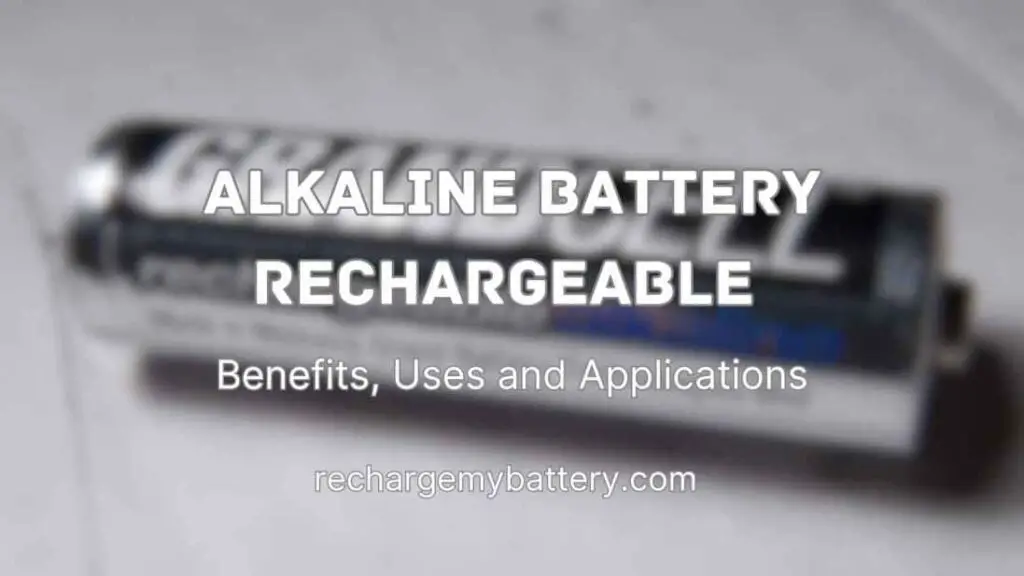This article will answer the question that why can alkaline batteries not be recharged. We’ll delve into their chemistry, limitations, safety concerns, and alternatives.
How Alkaline Batteries Work
Before we delve into the reasons why alkaline batteries cannot be recharged, let’s first understand how they work. Alkaline batteries are primary batteries, meaning they are designed for single use only. They generate electrical energy through a chemical reaction that occurs within the battery itself.
The Chemistry Behind Alkaline Batteries
Alkaline batteries contain a cathode (positive terminal) composed of manganese dioxide and a zinc anode (negative terminal). The two electrodes are separated by an alkaline electrolyte, typically potassium hydroxide. When the battery is in use, a chemical reaction takes place, converting the stored chemical energy into electrical energy.
Rechargeable Batteries vs. Alkaline Batteries
Rechargeable batteries, such as lithium-ion or nickel-metal hydride batteries, can be recharged multiple times, making them a cost-effective and environmentally friendly option. Alkaline batteries, on the other hand, are not designed to be recharged and are classified as non-rechargeable or disposable batteries.
Limitations of Alkaline Batteries
Alkaline batteries have several limitations compared to rechargeable batteries. Firstly, they have a limited capacity and discharge energy relatively quickly, especially when used in high-drain devices. Secondly, alkaline batteries tend to have higher internal resistance, which can result in voltage drops and reduced performance over time. Lastly, they are more prone to leakage, which can damage devices and potentially harm the environment.
Factors Preventing Recharging
There are specific factors that prevent alkaline batteries from being recharged. One of the main reasons is the irreversible chemical reactions that occur during the discharge process. These reactions cause changes in the battery’s internal structure, which cannot be easily reversed or regenerated.
Additionally, alkaline batteries lack a key component required for the rechargeability of batteries: a suitable electrode material capable of undergoing reversible reactions. The materials used in alkaline batteries, such as zinc and manganese dioxide, are not suitable for reversible reactions and degrade during discharge.
Safety Concerns with Recharging Alkaline Batteries
Attempting to recharge alkaline batteries can pose safety risks. Due to their non-rechargeable nature, alkaline batteries are not designed to handle the charging process. Recharging them can cause overheating, leakage, or even rupture, leading to potential hazards, including fire or chemical exposure.
It is crucial to prioritize safety and adhere to manufacturer recommendations regarding battery usage and disposal. Using rechargeable batteries specifically designed for multiple uses is a safer alternative.
Alternatives to Alkaline Batteries
For applications that require repeated battery use, rechargeable batteries are the ideal choice. Rechargeable battery technologies, such as lithium-ion and nickel-metal hydride, offer higher energy density, longer lifespan, and the ability to be recharged numerous times. These batteries provide a more sustainable and cost-effective solution, reducing waste and environmental impact.
Environmental Impact of Alkaline Batteries
The disposal of alkaline batteries presents environmental concerns. These batteries contain various chemicals, including heavy metals such as zinc, manganese, and potassium hydroxide. If not disposed of properly, these substances can contaminate soil and water sources, posing risks to ecosystems and human health.
To mitigate the environmental impact, it is crucial to recycle alkaline batteries through designated recycling facilities. Many municipalities offer battery recycling programs, allowing for proper disposal and the recovery of valuable materials.
Conclusion
In conclusion, alkaline batteries cannot be recharged due to irreversible chemical reactions, lack of suitable electrode materials, and safety concerns. While they provide a convenient and readily available power source for single-use applications, their limited capacity, shorter lifespan, and environmental impact make rechargeable batteries a more sustainable choice.
By understanding the differences between battery types and considering their specific requirements, we can make informed decisions about our power sources while minimizing waste and promoting environmental responsibility.
Thank you for reading it.
